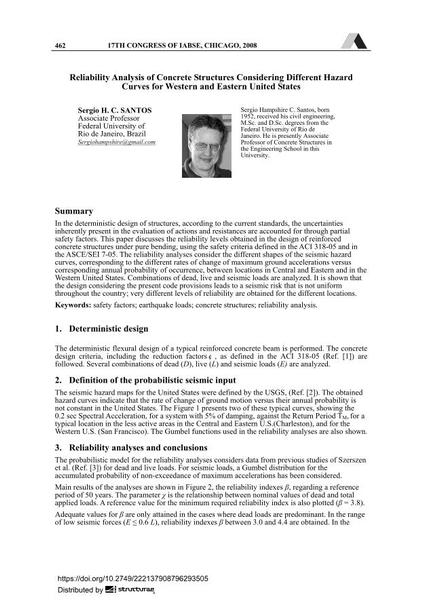Reliability Analysis of Concrete Structures Considering Different Hazard Curves for Western and Eastern United States

|
|
|||||||||||
Détails bibliographiques
| Auteur(s): |
Sergio Hampshire Santos
|
||||
|---|---|---|---|---|---|
| Médium: | papier de conférence | ||||
| Langue(s): | anglais | ||||
| Conférence: | 17th IABSE Congress: Creating and Renewing Urban Structures – Tall Buildings, Bridges and Infrastructure, Chicago, USA, 17-19 September 2008 | ||||
| Publié dans: | IABSE Congress Chicago 2008 | ||||
|
|||||
| Page(s): | 462-463 | ||||
| Nombre total de pages (du PDF): | 8 | ||||
| Année: | 2008 | ||||
| DOI: | 10.2749/222137908796293505 | ||||
| Abstrait: |
In the deterministic design of structures, according to the current standards, the uncertainties inherently present in the evaluation of actions and resistances are accounted for through partial safety factors. This paper discusses the reliability levels obtained in the design of reinforced concrete structures under pure bending, using the safety criteria defined in the ACI 318-05 and in the ASCE/SEI 7-05. The reliability analyses consider the different shapes of the seismic hazard curves, corresponding to the different rates of change of maximum ground accelerations versus corresponding annual probability of occurrence, between locations in Central and Eastern and in the Western United States. Combinations of dead, live and seismic loads are analyzed. It is shown that the design considering the present code provisions leads to a seismic risk that is not uniform throughout the country; very different levels of reliability are obtained for the different locations. |
||||
